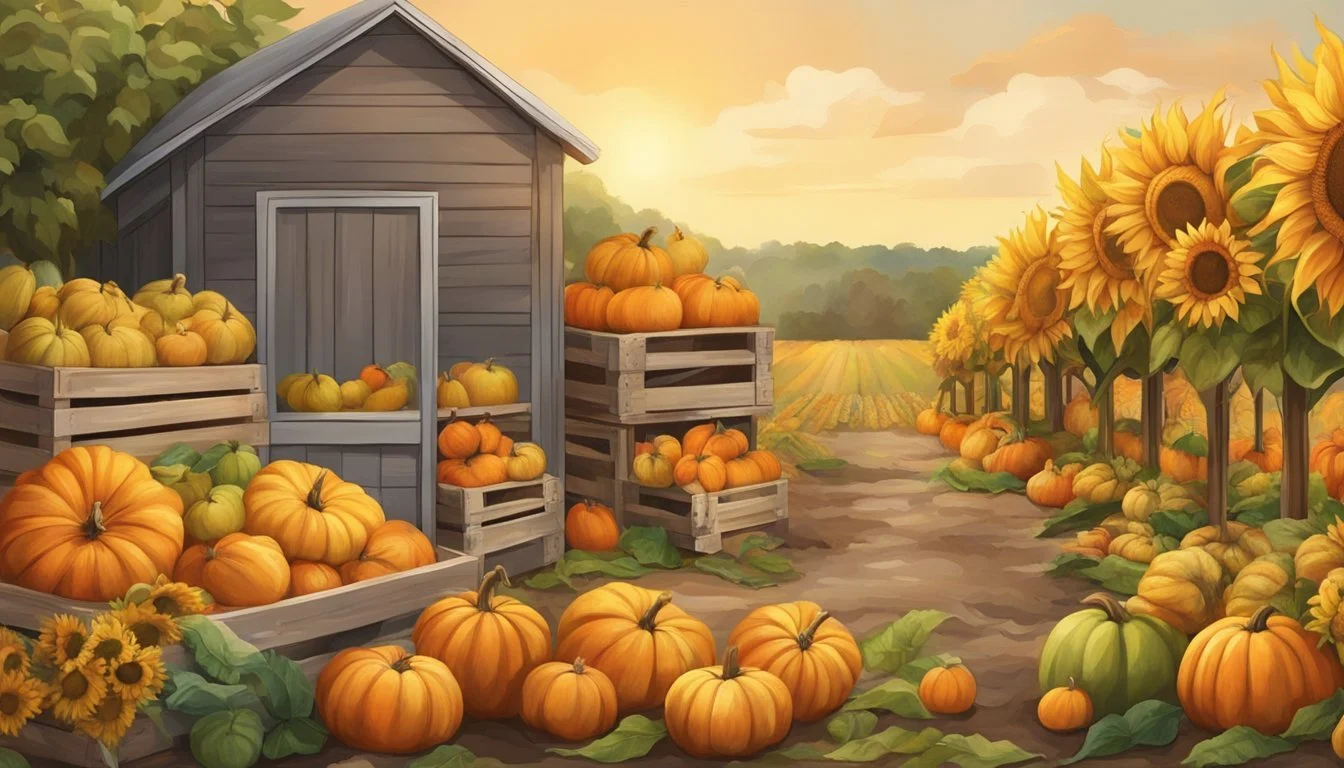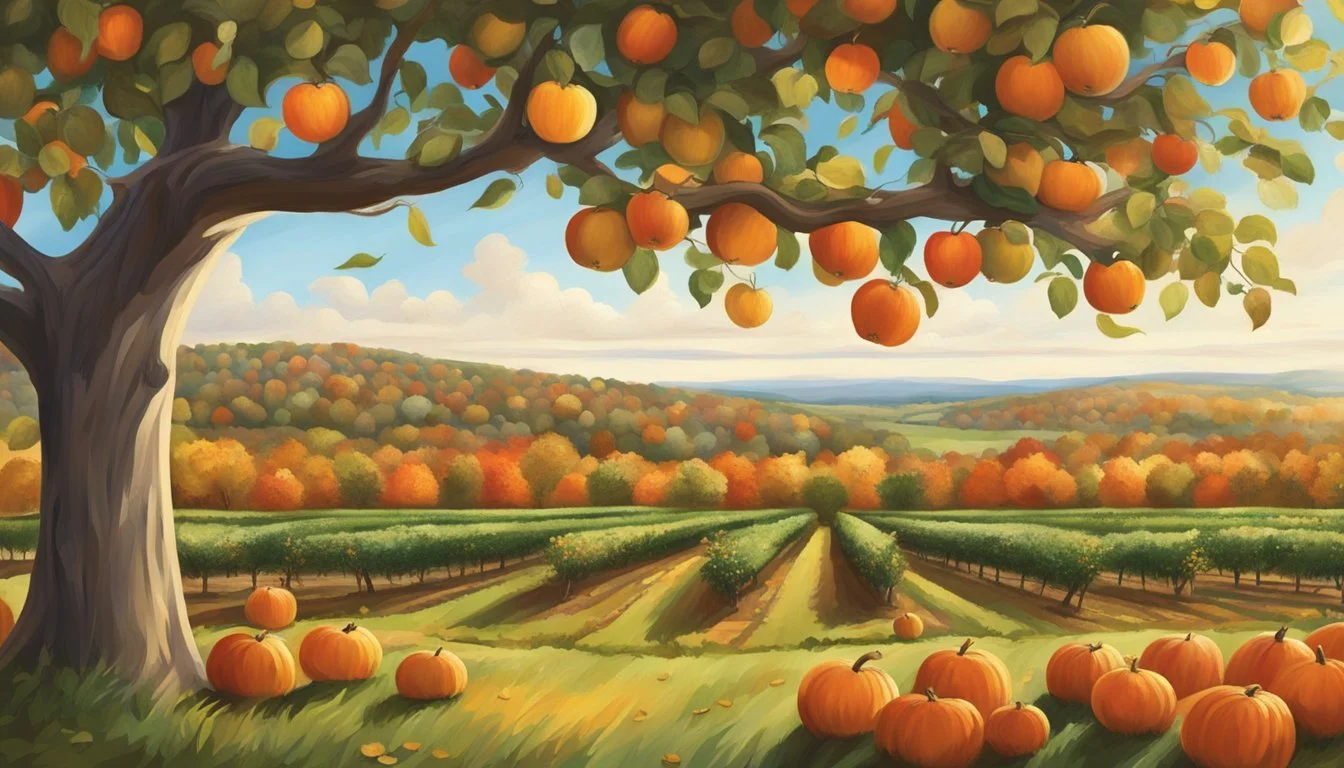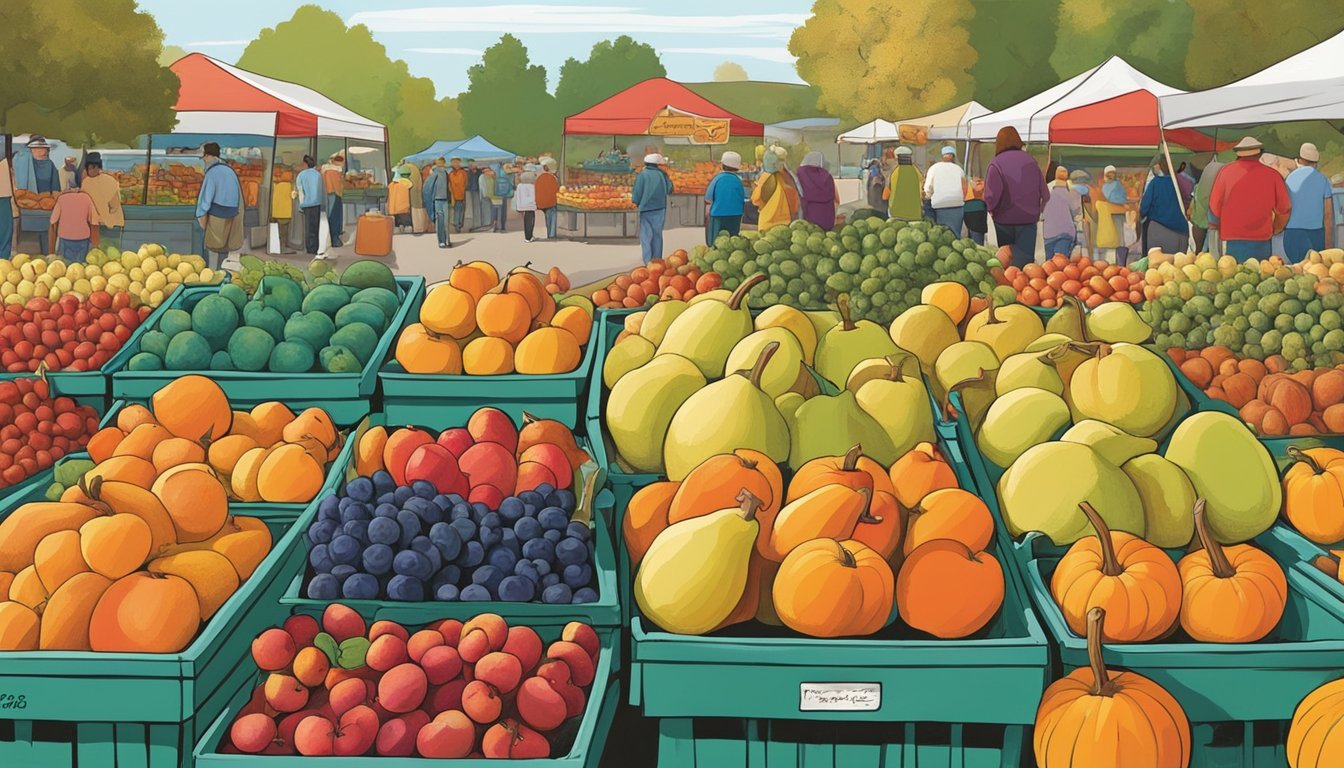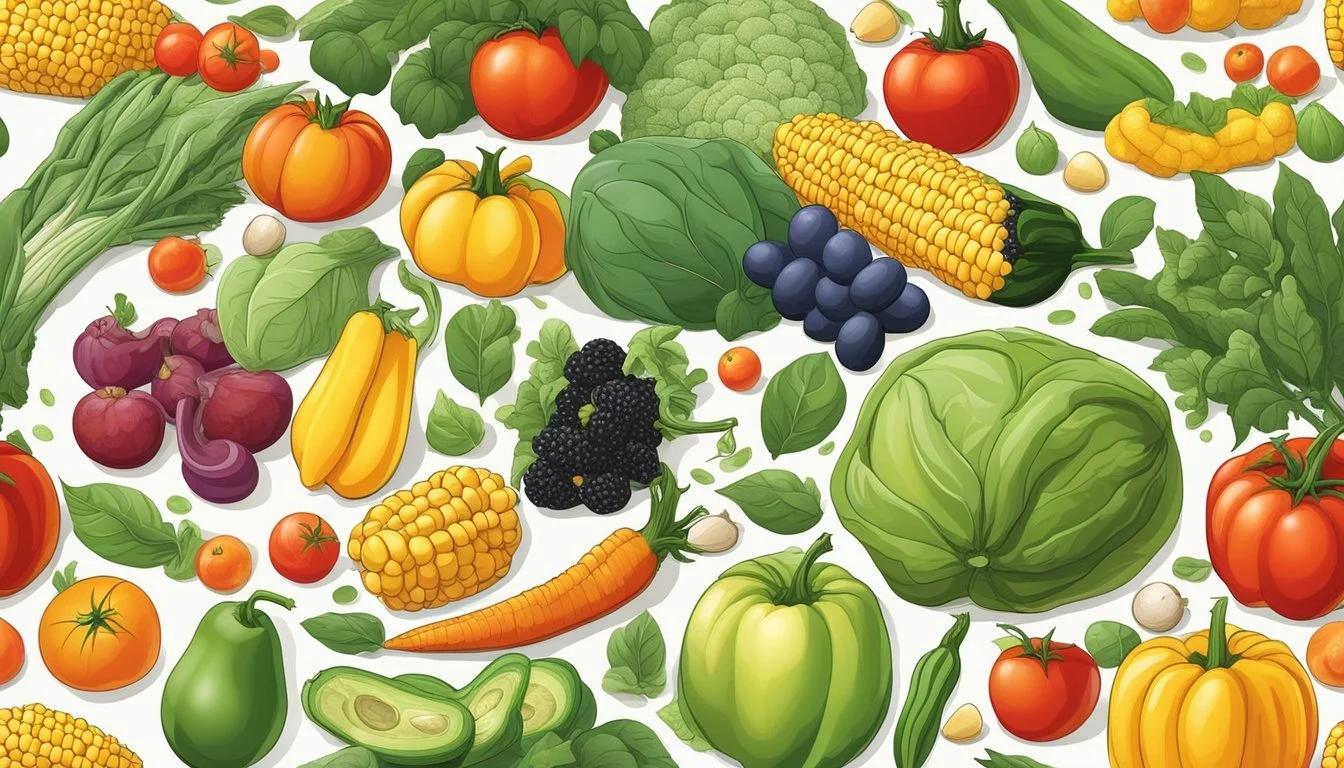Wisconsin Seasonal Fruit & Vegetables in September
Your Guide to Fresh Picks
This Article is Part of our Wisconsin Seasonal Fruit & Veg Calendar
September in Wisconsin is a peak time for a variety of fresh produce, marking a period when the harvest brings a bounty of fruits and vegetables to the tables. The state's climate and soil conditions make it an ideal season for growers to supply a rich assortment of local produce. Wisconsin's farmers markets and grocers are abundant with the season's best, offering a true taste of the region's agricultural offerings.
During this month, the cooler temperatures and shorter days result in a diverse harvest that includes both late-summer fruits and the first of the fall vegetables. Among the fruits, the tart and sweet cranberries start to become available, reflecting a long-standing tradition of cranberry cultivation in Central Wisconsin's marshlands. Vegetables such as broccoli (how long does broccoli last?), Brussels sprouts (how long do brussels sprouts last?), and cauliflower (how long does cauliflower last?) also reach their peak, along with a variety of hardy greens that thrive in the fall weather.
Consumers looking for the freshest seasonal selections will find September an opportune time to enjoy the flavors of Wisconsin. The state's commitment to local farming ensures that the produce available is not only fresh but also supports the local economy and the sustainability of Wisconsin's rich agricultural heritage. Whether it's incorporating cranberries into a dessert or preparing a hearty vegetable stew, the seasonal harvest provides ample inspiration for both home cooks and professional chefs alike.
Seasonal Overview of Wisconsin Produce
Wisconsin's bountiful September harvest is a testament to its rich and diverse agricultural heritage; the fall growing season brings a variety of fresh produce to the table.
Understanding Wisconsin's Growing Season
Wisconsin's growing season is defined by its variable weather patterns, characterized by warm summer days that gradually shift to crisp autumn nights. These conditions make fall an ideal time for harvest. The state's soil and climate conditions are conducive to growing a wide range of fruits and vegetables. September, nestled firmly in the fall season, is particularly rich with ripe produce as it coincides with the tail end of the warm growing period before the onset of the colder months.
September's Harvest Calendar
In September, Wisconsin farms offer a rich variety of produce, with fruits and vegetables reaching peak maturity. The following list outlines typical produce available during this month:
Fruits:
Apples
Pears
Plums
Vegetables:
Beets (how long do beets last?)
Broccoli
Brussel sprouts
Cabbage
Carrots
Cauliflower
Celery
Corn
Cucumbers
Eggplant
Kale
Leeks
Lettuce
Onions
Peppers
Potatoes
Pumpkins
Radishes
Spinach
Squash
Tomatoes
Zucchini
This period marks a transition as farmers and consumers prepare for the end of fresh summer offerings and the arrival of heartier fall produce, suitable for the state's celebrated comfort dishes.
Locally Grown Fruits in September
As the summer wanes, Wisconsin's fruit harvests transition to the heartier selections of autumn. September, particularly, is a prime month for a variety of fresh and crisp fruits, ripe for the picking from local orchards and farms.
Apple Varieties and Orchards
Wisconsin orchards in September burst with a variety of apples. Notable for their crispness and juicy flavors, apple varieties range from the tart 'Granny Smith' to the sweet 'Honeycrisp'. Many orchards offer pick-your-own experiences, allowing visitors to select their own fresh fruit straight from the tree.
Popular Apple Varieties:
Honeycrisp
McIntosh
Gala
Cortland
Berries Still Available
Berries continue to sweeten the early days of September. While the peak season for strawberries is behind, you may still find some late bloomers. Raspberries, on the other hand, can often be found fresh and ripe, with their plump and juicy berries available for harvest in Wisconsin farms.
Berry Availability:
Raspberries: Available
Strawberries: Limited availability
Late Summer Plums and Pears
In September, plums and pears come into season, offering a mildly sweet and sometimes tart flavor profile. These stone fruits are often ripe enough to eat fresh off the tree or can be used in a variety of recipes.
Stone Fruits to Look For:
European Plums: Rich and sweet
Bartlett Pears: Juicy and ideal for eating fresh
By visiting local Wisconsin farms and orchards in September, one can indulge in the fresh, crisp flavors of autumn's fruitful bounty.
Featured Vegetables and Legumes
September brings a bounty of earthy root vegetables and robust legumes to Wisconsin's harvest baskets. This month is ideal for embracing the nutritious and flavorful produce that the local soil yields, and here's a close look at some of the seasonal highlights.
Root Vegetables and Their Benefits
Root vegetables like potatoes, beets, carrots, and radishes are plentiful in September across Wisconsin. These vegetables are known for their long shelf life and rich content of vitamins and minerals.
Potatoes provide a versatile base for many dishes and are an excellent source of vitamin C and potassium.
Beets offer a sweet, earthy flavor and are rich in fiber, folate, and manganese.
Carrots, with their high beta-carotene content, are beneficial for eye health.
Radishes, often enjoyed raw, bring a peppery bite as well as vitamin C and potassium to a meal.
Cruciferous Varieties in Season
The cruciferous family boasts some of Wisconsin's September stars: broccoli, cauliflower, Brussels sprouts, and cabbage. Each of these vegetables is known not only for their distinctive tastes and textures but also for their health benefits.
Broccoli and cauliflower stand out with their cancer-fighting properties and are dense with vitamins C and K.
Brussels sprouts are a firm favorite and contain high levels of vitamins and antioxidants.
Cabbage comes in a variety of colors, each packed with vitamins C and K and works well in both raw and cooked forms.
Beans and Peas Harvest
The legume harvest is in full swing with an array of beans and peas ready to be picked. Fresh green beans and peas can be enjoyed raw or cooked and are known for their texture and sweetness.
Beans, including varieties like snap beans, are at their tender best and offer both fiber and protein.
Peas provide not just a sweet pop of flavor but are also a good source of vitamins A, K, and C.
Eating seasonally in Wisconsin during September means enjoying these vegetables and legumes at their peak of freshness and nutritional value.
Preparation and Preservation Methods
When the abundance of Wisconsin's September harvest comes in, knowing how to store, preserve, and prepare the bounty ensures enjoyment of these foods throughout the year.
Storing Fresh Produce for Longevity
Fresh produce such as apples and plump cranberries are at their peak in September. To maximize shelf life, apples should be kept in a cool, dark place, ideally in a perforated plastic bag in the crisper drawer of a refrigerator. Cranberries fare well when stored in a sealed container in the fridge; they can also be frozen.
Apples: Place in refrigerator, crisper drawer, perforated bag.
Cranberries: Sealed container in refrigerator or in freezer.
Creating Preserves from Surplus
Jam makers will find that Wisconsin's fruit bounty lends itself to delicious jams and jellies. Similarly, surplus vegetables can be turned into salsas or pickles using canning methods which include water-bath and pressure canning. In preserving these items:
Jams/Jellies: Use research-tested recipes ensuring proper acidity for preservation.
Salsa/Pickling: Follow precise recipes to maintain food safety.
Simple and Healthy Cooking Recipes
Utilizing fresh produce in recipes not only enhances flavor but also offers nutritional benefits. One can make applesauce with just apples and a bit of water, cooking down the mixture and mashing or pureeing to the desired consistency. Freezing certain vegetables, such as beans, may require blanching to preserve color and texture before freezing. When cooking, always choose methods that maintain nutritional value and freshness.
Applesauce: Cook apples with water, then mash.
Freezing: Blanch vegetables prior to freezing to preserve quality.
Wisconsin's Agri-Tourism in September
September in Wisconsin is ripe with agri-tourism opportunities, offering a diverse range of farm-centric activities that tap into the state's harvest season. Visitors can engage in hands-on experiences from U-Pick farms to vibrant farmers markets, all showcasing the abundance of fresh, locally-grown produce.
Visiting Local Farms and Orchards
Wisconsin is nationally recognized for its agricultural abundance, and September is a prime time for visitors to explore its local farms and orchards. Farms open their doors to tourists, providing educational tours that explain the cultivation processes of seasonal crops like apples and pumpkins. Travelers can witness the careful attention to sustainable farming practices firsthand.
U-Pick Farm Experience
U-Pick farms offer an authentic agritourism experience, encouraging visitors to step into the role of a farmer for a day. This interactive form of agriculture allows them to "pick-your-own" fruits and vegetables, directly connecting people with their food sources. It's a family-friendly activity where participants learn about crop availability and indulge in the freshest produce.
Crop Availability in September:
Apples
Pumpkins
Winter squash
Gourds
Farmer's Markets and Their Impact
Farmers markets in September thrive with local vendors and farmers. These markets not only serve as a hub for selling fresh produce but also act as community gatherings that support the local economy. Wisconsin's markets are stocked with late summer produce and early fall offerings, impacting both the community's access to fresh food and the sustainability of local farms.
Typical Farmers Market Produce in September:
Corn
Tomatoes
Beans
Root vegetables
Leafy greens
The atmosphere at these markets is rich with knowledge-sharing, where vendors are eager to share cooking tips and recipe ideas, enhancing the overall agritourism experience.
Educational Resources
In Wisconsin, numerous resources are dedicated to educating the public about the importance of incorporating seasonal fruits and vegetables into their diet. These resources often provide detailed guides and offer instructional workshops or cooking classes to assist individuals in making the most of September's harvest.
Seasonal Eating Guides
Seasonal eating guides are essential for understanding which fruits and vegetables are ripe for the picking in September. Such guides not only list the produce available but also include nutritional information and recipe suggestions. For instance:
Fruits: Apples and pears are among the highlight fruits of September.
Vegetables: Root vegetables like potatoes and sweet varieties like corn still flourish.
Many of these guides are readily available online through agricultural extensions and public health departments.
Workshops and Cooking Classes
Educational workshops and cooking classes provide hands-on experience with September's seasonal produce. Participants learn storage techniques, preparation methods, and cooking tips to enhance flavor while maintaining nutritional value.
Workshops: They typically cover a range of topics including canning, fermenting, and safe handling of fresh produce.
Cooking Classes: Local chefs and culinary instructors might focus on creating dishes that highlight the unique flavors of seasonal items like squash and Brussels sprouts.
Community centers, farmers' markets, and local colleges often schedule these events, with some being free of charge or offered at a minimal cost.
Promoting Wisconsin Produce
Wisconsin champions its agricultural heritage by fostering strong connections between consumers and local producers, especially when it comes to September's bounty of fresh produce. The state's efforts are wide-ranging, from official campaigns to social media engagement, ensuring that consumers have ample opportunity to experience the fruits of local farmers' labors.
State Programs and Campaigns
Wisconsin's Department of Agriculture, Trade and Consumer Protection actively endorses several programs aimed at promoting the state's produce. Their initiatives range from certifying farmers' markets to providing grants that boost local agricultural enterprises. For instance, the "Something Special from Wisconsin™" campaign is a popular program that signifies products as 100% Wisconsin-grown or processed, allowing consumers to easily identify and choose local products.
The state also celebrates Wisconsin Farm to School, a program that connects schools with local farms, providing children with fresh produce and educating them about the importance of local agriculture. This has the dual benefit of instilling nutritional values in students and supporting Wisconsin's produce market.
Connecting with Community via Social Media
Wisconsin's agricultural community has also embraced social media platforms like Facebook, Twitter, and Pinterest to connect directly with consumers. Farmers' markets across the state maintain active social media profiles, updating followers about the seasonal availability of produce, sharing recipes, and promoting special market events.
Facebook: Local markets use Facebook events to invite community members to seasonal happenings, where they can purchase September favorites such as apples, squash, and corn.
Twitter: Quick updates and conversations about Wisconsin produce are common, using hashtags such as #EatLocal and #WIFarmFresh to engage users and amplify reach.
Pinterest: Farms and markets share pins of fresh produce arrangements and recipe ideas, inspiring consumers to utilize September produce in new and delicious ways.
By leveraging these platforms, Wisconsin's producers can enhance the visibility of their fresh, in-season offerings and create a sense of community around the state's agricultural abundance.







